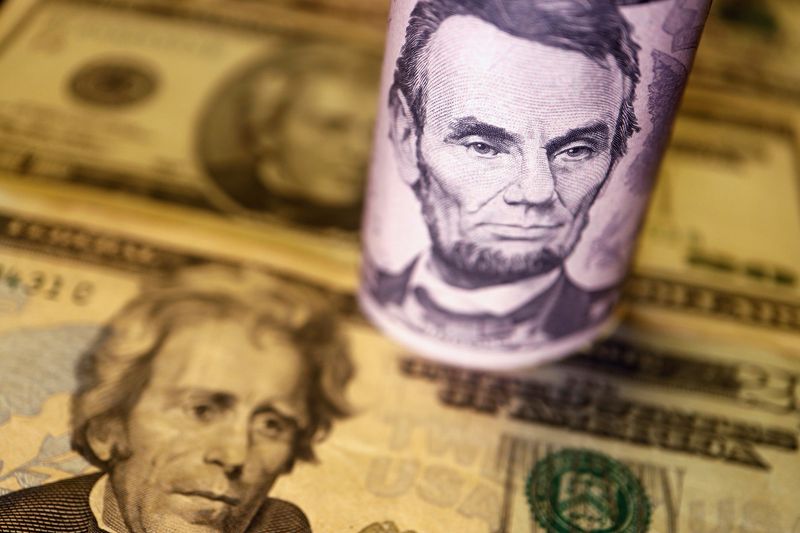By Hari Kishan
BENGALURU (Reuters) - U.S. Treasury yields a year from now are forecast to trade sharply lower than the level expected by bond strategists polled by Reuters just one month ago, underscoring how much financial markets have diverged this year from the central bank's view.
While the U.S. economy grew at an annualised 2.9% in the final quarter of last year, it is clearly losing momentum. Market traders and policymakers differ on the severity of the coming downturn, as well as the likely policy response.
Bond strategists at JPMorgan (NYSE:JPM) noted recently that the U.S. Treasury market is already priced for a recession and not just for the heightened risks of one.
"In the latest rally, Treasuries have diverged further from their underlying drivers...10-year yields appear 30 basis points too low after controlling for the market's Fed policy, and growth expectations," they wrote in a recent note.
Already off their peaks from late last year and early 2023, major benchmark government bond yields have eased 20-40 basis points since, and more than 50 basis points on the particularly rate-sensitive U.S. two-year Treasury yield.
Economists - many from the same banks - broadly expect the Federal Reserve to raise interest rates a few more times before pausing, with no reductions due this year, suggesting that the fall in two-year yields is too early.
They also say the risk to their outlook is that rates stay higher for longer, rather than the other way around.
Benchmark 10-year U.S. Treasury yields were forecast to rise from 3.50% on Thursday to 3.70% in three months and then drop to 3.60% and 3.25% in six, and 12 months, respectively, in the Jan. 18-27 Reuters poll of 58 strategists.
That is about 30 basis points lower on the one-year horizon than a poll published in December.
U.S. two-year yields were also expected to drop from around 4.15% presently to 3.52% in a year, more than 40 basis points below the 3.94% forecast from last month's survey.
This would extend one of the longest periods on record where two-year yields have been higher than 10-year ones, a yield curve inversion. Every U.S. recession since 1955 has been preceded by an inverted yield curve.
But the Fed has indicated it is not ready to even consider cutting interest rates any time soon.
"While markets are currently penciling in the first cut in late 2023, we expect the first cut only in Q1 2024 and look for the curve to stay inverted for longer, as front-end rates remain elevated and the long end continues to price in slowing growth momentum," said Priya Misra, head of global rates strategy at TD Securities.
Sovereign bond yields in the euro zone and Britain, where policymakers also are not done raising rates and are grappling with even higher inflation than in the United States, were predicted to trade lower in a year, too.

The poll expected German bund yields to rise from their current 2.25% to around 2.4% in three and six months. They were then forecast to fall back to 2.05% in a year.
Gilt yields, last trading around 3.30%, were forecast to rise and peak at 3.45% by end-March and remain near these levels for another three months and then fall to 3.20% by year end.